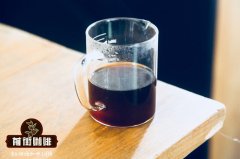Description of Flavor characteristics of Costa Rican three Wonders F1 Coffee and introduction of Manor
In 2013, the Facusse family, which has long run Dinant Food Sale in Costa Rica, decided to use Camilo's successful experience in planting estates in Colombia to start a new manor project in Costa Rican Coffee and named it the three Wonders. The name of the three miracles comes from Camilo's belief that all successful manors absolutely have these three factors to cooperate with each other. These three elements are coffee trees, farmers and land.
Location was the most important decisive factor in deciding to start the Costa Rican coffee estate. After a long discussion and land evaluation process, it was finally decided to choose Tarrazu, the highest producing area in Costa Rica, where the estate is located at an altitude of 1450-1750 meters above sea level. The soil is pozzolanic soil from the Irazu volcano, providing sufficient nutrients for coffee trees. At the same time, Camilo also requires the manor to maintain a low-density coffee planting area, which is more conducive to the absorption and growth of coffee trees, as well as a higher improvement of cup flavor. At present, the planting area of the three Wonders Manor is about 120ha, and the annual top micro-batch output is only about 300bags. In addition, the hardware of the manor is mainly planned according to four key points:
The first is to use the Green House system (Green House System) to provide better humidity, temperature and ventilation of raw coffee beans during the sun-drying phase.
The second is the environmental intercropping symbiosis system (Intercrop System), which not only provides manor ecological diversity by planting different plants, but also helps farmers to control farm ecology.
The third is shade tree planting (Shade Grown System). Most of the Inga trees are used in the manor with some other local trees, so that the growth of coffee trees is in a perfect shade environment to protect the growth of coffee trees.
The fourth is to choose the right coffee variety. At the beginning of planting in the manor, Camilo decided to adopt the traditional coffee variety with low yield but better flavor. In addition to Bourbon and Geisha, F1 is a new variety developed by the French research organization CIRAD in Costa Rica in recent years. F1 is a mixture of Villa Sarchi+Sachimor and Sudan Rume, which not only has the flavor of the traditional Central American Villa Sarchi, but also has the citrus flavor of the African variety Sudan Rume.
F1 coffee
F1 is a new variety developed by the French research organization CIRAD in Costa Rica in recent years. F1 is a mixture of Villa Sarchi+Sachimor and Sudan Rume, which not only has the traditional Central American Villa Sarchi flavor, but also has the citrus flavor of the African variety Sudan Rume.
Dried incense: honey, black sugar, almonds, candied fruit, cedar, syrup
Wet fragrance: sugarcane, sweet peach, milk chocolate, drupe
Sip: dark fruit notes, sweet spices, nuts, honey, peaches, round taste.
Costa Rica three miracles F1 sun
Coffee bean producing area: Tarrazu
The manor was founded in: 2013
Planting area: about 120 hectares
Annual rainfall: about 2400 mm
Average annual temperature: average 20 ℃
Planting altitude: 1450-1750 m
Coffee variety: F1
Grading standard: SHB
Type of soil: volcanic soil
Coffee treatment: honey treatment
Harvesting method: manual harvesting
Harvest time: 2017

Important Notice :
前街咖啡 FrontStreet Coffee has moved to new addredd:
FrontStreet Coffee Address: 315,Donghua East Road,GuangZhou
Tel:020 38364473
- Prev

Flavor characteristics of Lake Parr Coffee and introduction of the Manor in Vivette Nanguo Manor, Guatemala
Lake Parr country: Guatemala Grade: SHB production area: Vivette Nan Fruit Manor: Finca La Providencia PALHU Manor varieties: Bourbon Bourbon, Caturra Kaddura, Mundo Novo New World altitude: average 1550 meters above sea level: European water washed extremely hard beans SHB harvest time: October to February of the following year
- Next

Yemeni mocha coffee is the first country to mass-produce coffee as a crop.
Professional coffee knowledge exchange more coffee bean information please follow Coffee Workshop (Wechat official account cafe_style) the world's three major coffee growing areas: Africa, Indonesia and Central and South America. Yemen was the first country in the world to produce coffee as a crop on a large scale. The cultivation and treatment of mocha coffee in Yemen today is the same as that of hundreds of years ago.
Related
- Detailed explanation of Jadeite planting Land in Panamanian Jadeite Manor introduction to the grading system of Jadeite competitive bidding, Red bid, Green bid and Rose Summer
- Story of Coffee planting in Brenka region of Costa Rica Stonehenge Manor anaerobic heavy honey treatment of flavor mouth
- What's on the barrel of Blue Mountain Coffee beans?
- Can American coffee also pull flowers? How to use hot American style to pull out a good-looking pattern?
- Can you make a cold extract with coffee beans? What is the right proportion for cold-extracted coffee formula?
- Indonesian PWN Gold Mandrine Coffee Origin Features Flavor How to Chong? Mandolin coffee is American.
- A brief introduction to the flavor characteristics of Brazilian yellow bourbon coffee beans
- What is the effect of different water quality on the flavor of cold-extracted coffee? What kind of water is best for brewing coffee?
- Why do you think of Rose Summer whenever you mention Panamanian coffee?
- Introduction to the characteristics of authentic blue mountain coffee bean producing areas? What is the CIB Coffee Authority in Jamaica?

